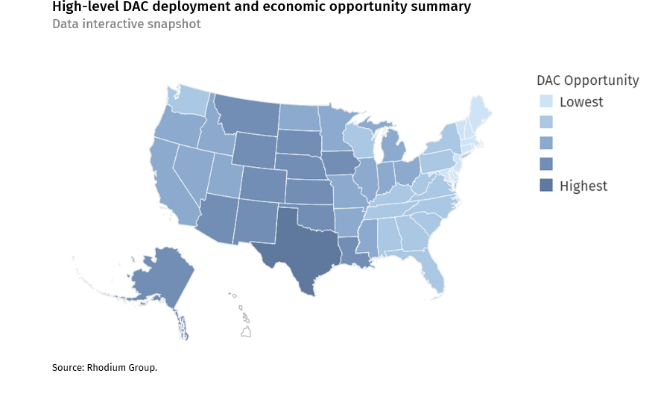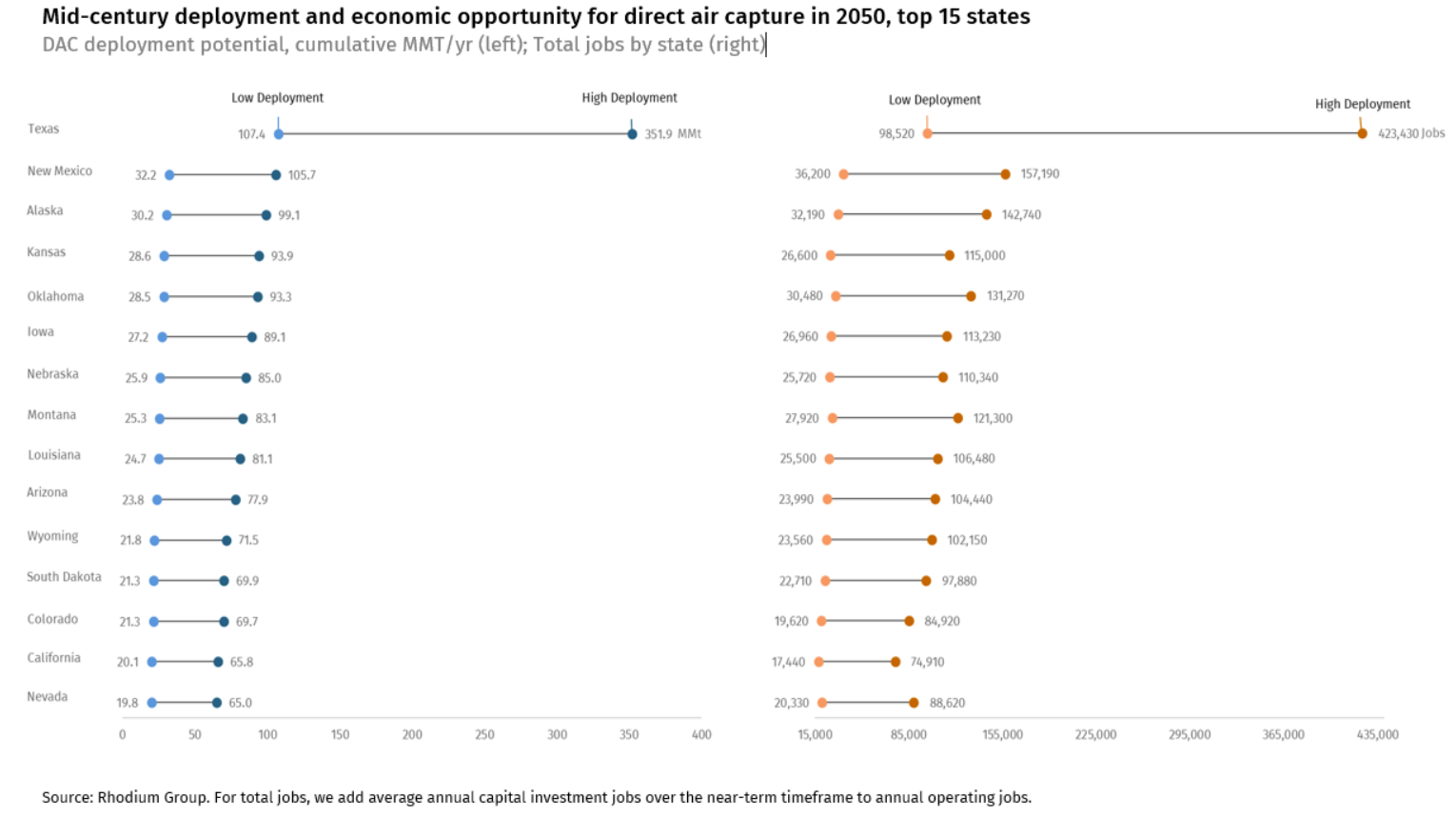Direct air capture technologies that take carbon dioxide from the atmosphere could create a jobs boom rivaling the industry that emitted those greenhouse gasses in the first place.
Across the United States the emerging direct air capture industry, which is receiving billions in tax incentives and direct grant support for technology development and deployment, could employ nearly 2 million people by 2050.
That figure from the Rhodium Group assumes that policies continue to support the technology and states move quickly to pave the way for new project development.

Image Credit: Rhodium Group
What is “Direct Air Capture”?
DAC is part of a broader suite of carbon capture, utilization, and storage (CCUS) technologies designed to help combat climate change by reducing atmospheric concentrations of CO2. These technologies are varied but can be broadly classified into two main approaches:
- Chemical Absorption: This method involves the use of liquid solvents that chemically bind with CO2 in the air. As air passes through a DAC facility, the solvent captures CO2 through a chemical reaction. The CO2-laden solvent is then processed to strip out the CO2, which can be compressed and stored underground or used in various applications. The regenerated solvent can be reused in the system to capture more CO2.
- Solid Adsorption: This method uses solid sorbents to physically adsorb CO2 from the air. These materials have surfaces that CO2 molecules stick to in a process similar to how a sponge absorbs water. After the sorbent is saturated with CO2, it can be heated or pressure-reduced to release the captured CO2, which is then collected for storage or use. The regenerated sorbent is recycled back into the system for capturing more CO2.
Who are the largest players?
- Carbon Engineering: Based in British Columbia, Canada, Carbon Engineering is a leading company in the DAC field that uses a chemical absorption process. It has developed a process that captures CO2 from the atmosphere and can convert it into clean transportation fuels or store it underground.
- Climeworks: Based in Switzerland, Climeworks is another key player that specializes in DAC technology. It uses solid adsorbent filters to capture CO2 directly from the air. The captured CO2 can then be stored underground or used in various applications, such as carbonated beverages or greenhouses.
- Global Thermostat: Operating in the United States, Global Thermostat uses both solid sorbent and amine-based liquid absorbents to capture CO2 from the air. The company’s technology is versatile and can be deployed in various settings, including power plants and industrial facilities.
- CarbonFree: CarbonFree focuses on capturing CO2 and mineralizing it to create valuable low-carbon materials. Its technology captures CO2 emissions from industrial sources and uses a process called SkyCycle to mineralize the CO2 for use in various products.
Federal Policies
Federal policies supporting direct air capture technology include a tax credit of up to $180 per ton of carbon dioxide removed and stored through the 45Q section of the tax code and direct spending of $3.5 billion on the creation of regional direct air capture hubs.
Climate and Labor Impacts
Roughly 85 million metric tons of carbon dioxide could be removed from the atmosphere by 2035 if incentives continue to support the development of carbon capture capacity, according to the Rhodium Group. That figure could leap to well over 1 billion metric tons per year by 2050, according to the Rhodium Group.
It’s an impressive figure, but human activity adds 35 billion metric tons of carbon dioxide to the air every year.
However, as the world looks to decarbonize, finding ways to transition the workers in the fossil fuel industry to quality jobs that rely on similar skill sets is vital.
Direct air capture is one approach that tackles the twin problems of carbon emissions and economic growth with a potential solution.

Image Credit: Rhodium Group

